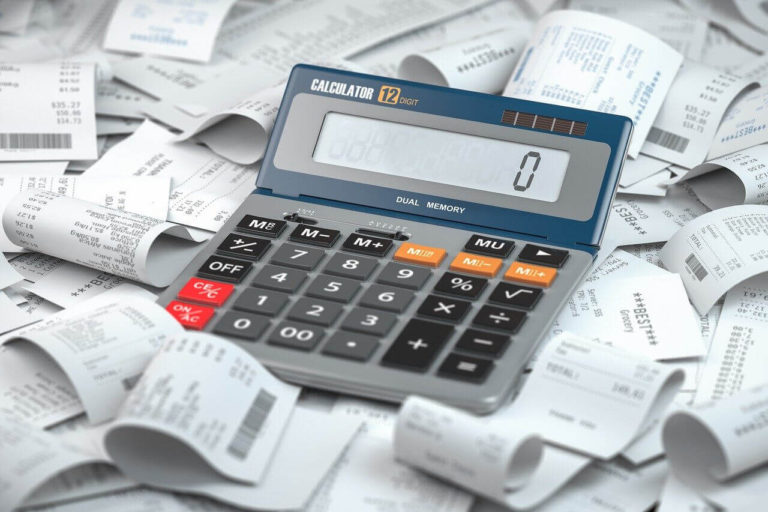Building Your Escape Fund
Deciding to leave your job and transition into entrepreneurship is exciting and life-changing. But let’s be real, it can also be a little intimidating. Without a solid financial plan, making this leap can feel risky. To make the transition smoother and more confident, there are two key numbers you need to figure out: your minimum survival expenses and the length of your financial runway. These two figures are essential for calculating your escape fund, the money that will support you as you step from your 9-to-5 into building your business.
But here’s an unconventional thought: What if the goal isn’t just to save enough, but to challenge your relationship with comfort and redefine what “enough” really means? This mindset shift can open the door to a more adaptable, sustainable plan as you prepare your escape fund for your entrepreneurial journey.
Understanding Your Essential Monthly Expenses
First things first, you need to get clear on what your essential monthly expenses look like. These are the non-negotiable costs that keep your household running, like rent or mortgage, utilities, groceries, insurance, and transportation.
Most people approach this step by listing expenses that they already assume are essential. This is where you can break the mold – question everything.
Do you really need the big apartment, or could you downsize for six months? Is owning two cars necessary, or could you experiment with public transportation? Shift your mindset and question norms to help redefine what you actually need versus what society has told you is “essential.”
Take Alex, for example. He’s a marketing pro who wanted to start his own consulting business. By reviewing his expenses, he found his minimum survival amount was $2,500 a month. This was only after challenging the idea that gym memberships and premium streaming services were essential.
What would your baseline monthly expense number be if you redefined comfort and needs? Knowing this number is vital for accurately calculating your escape fund.
Building a Comprehensive Budget
A solid budget is more than just a list of expenses. It’s your financial blueprint. It encompasses fixed expenses (the things that stay the same each month, like rent and insurance), variable expenses (the ones that can change, like groceries and gas), discretionary spending (the fun stuff you could live without, like dining out and streaming services), contributions to your emergency fund (to handle life’s curveballs), and savings or investments that go toward your escape fund.
Here’s where many mainstream budgeting strategies fall short. They promote a sense of scarcity that makes you feel like you’re sacrificing luxuries just to “survive.”
Instead, what if budgeting could be a game of creativity and resourcefulness? Could you swap expensive fitness classes for community-run workouts or free YouTube routines?
Challenge yourself to find free or inexpensive alternatives that bring joy without the cost. This approach transforms your budget from a set of limitations to a toolkit for building a robust escape fund.
Setting Your Financial Runway
Now, let’s talk about the financial runway. This is the number of months you can live off your escape fund without additional income.
Mainstream advice often implies that longer is always better, but what if aiming for a shorter runway could actually accelerate your growth?
By committing to a 6-month runway, you create a sense of urgency that pushes you to focus, innovate, and hustle. While it may seem riskier, this approach can prevent complacency and force you to make swift, decisive moves.
When I decided to leave my job, I aimed for a 12-month runway because that felt secure for me. I also experimented by simulating shorter periods to build resilience and adaptability.
What lifestyle changes would you make if you aimed for a shorter, more intense runway? Understanding your financial runway is crucial as it informs how large your escape fund needs to be.
Calculating Your Escape Fund
Calculating your escape fund is straightforward. Simply multiply your minimum monthly expenses by the number of months you want in your runway. For instance, if your monthly survival cost is $2,500 and you aim for 12 months, you’ll need $30,000 in your escape fund.
But here’s a bold idea, instead of focusing solely on saving a lump sum, why not also develop micro-income streams that can serve as mini-safety nets during your entrepreneurial phase?
Alex and I had different approaches. He aimed for a 6-month runway and supplemented it with freelance work that covered a small portion of his monthly needs, which made his leap sustainable without an enormous upfront escape fund.
Could side projects or passive income sources redefine your escape fund goal?
Overcoming Potential Challenges

Building an escape fund and preparing for an entrepreneurial leap comes with its challenges. But instead of seeing these challenges as obstacles, what if you reframed them as opportunities for growth?
Challenge 1: Sticking to a Strict Budget Over Time
Staying on a strict budget for months can feel like a grind, and mainstream advice often frames this as purely a willpower issue. But what if it’s more about mindset?
Solution: Shift from viewing your budget as restrictive to seeing it as empowering. Turn it into a game: “How creatively can I meet my needs without spending?” Celebrate small victories, like finding free entertainment or bartering services with friends. Have you tried reframing your budget challenges into personal achievements?
Challenge 2: Unexpected Expenses
Life throws curveballs, and unexpected expenses can derail even the best-laid plans. Instead of seeing these moments as setbacks, think of them as resilience training.
Solution: Treat every unexpected expense as a mini-test of your adaptability. What’s your Plan B or C when Plan A goes off track? Preparing your mindset for flexibility is just as important as preparing your escape fund.
Challenge 3: Income Fluctuations and Limited Cash Flow
Side gigs and freelance work can be unpredictable. Mainstream advice often suggests diversifying income streams but doesn’t emphasize the personal growth that comes from navigating these ups and downs.
Solution: Use low-income periods as opportunities to innovate. Create content, develop a skill, or strengthen your network during quieter months. How can you turn slow income periods into productive growth phases?
Challenge 4: Lifestyle Sacrifices and Motivation Loss
Cutting out entertainment or small luxuries can feel restrictive over time, leading to a drop in morale.
Solution: Find joy in free or low-cost activities that add value to your life without impacting your escape fund. Surround yourself with supportive people who understand your goals and can uplift you when motivation wanes. Joining online groups or communities can keep you inspired and focused. What activities can you add to your routine that don’t cost a thing but bring you happiness?
Challenge 5: Staying Accountable
Without accountability, it’s easy to make small exceptions that add up over time.
Solution: Share your goals with a trusted friend or mentor who can check in with you regularly. Set weekly or monthly budget check-ins for yourself to evaluate progress and make necessary adjustments. Have you thought about who in your circle could be your accountability partner?
Making Your Budget Work
Choosing between a 6-month and a 12-month plan can shape how you build your escape fund. A 6-month plan requires a more aggressive approach, cutting most non-essentials and maximizing every dollar through side work. It’s great if you’re ready for an intense, fast-paced savings phase. On the other hand, a 12-month plan is more balanced, letting you make gradual lifestyle changes while still enjoying life a little.
If you’re leaning toward either plan, try “test-driving” your budget by living on it for a month while you’re still employed. This helps you spot any potential issues and prepares you for the changes ahead. How do you think this test-run would feel for you?
Planning for the Unexpected
Even with the best-laid plans, surprises happen. That’s why building a buffer into your escape fund is wise. An emergency fund covers unexpected personal costs, while a business cushion handles surprises during your business launch. Have you thought about the unexpected costs that might come up during your first year?
Staying Motivated and Accountable
Staying committed to your plan can be tough, and motivation is about more than just tracking your budget—it’s about who you surround yourself with. Do you have people in your circle who can keep you inspired and share creative solutions? Regularly checking in with a group or a mentor can make the journey less lonely and more motivating. Who can you lean on for accountability and support?
Final Thoughts
To make sure your budget and escape fund are realistic, give them a test run for a month while you’re still employed. Are you willing to take this step to ensure your budget is foolproof? Make it a habit to check in on your budget regularly and adjust it as needed. Remember, all the effort you’re putting in now is an investment in your future freedom. What does that future look like to you, and how are you redefining what “enough” means?
A budget designed for transitioning to entrepreneurship is more than just a spreadsheet—it’s a mindset shift and a roadmap to your future. By questioning norms, building your resilience, and embracing unconventional approaches, you’re creating a safety net that lets you take that big step with confidence. Start building your escape fund today—it’s worth every bit of effort. What’s stopping you from challenging the mainstream and starting today?
I’m Kim Nelson, a writer, entrepreneur, and small business owner with over 20 years of experience. My career began as a partner in a successful photography business before I transitioned to selling physical products on Amazon FBA, including my own creations. I’m also the founder and owner of two websites. Download my complimentary guide, “Bridging the Gap,” to help you navigate the financial transition from leaving a steady paycheck to becoming a profitable entrepreneur.








